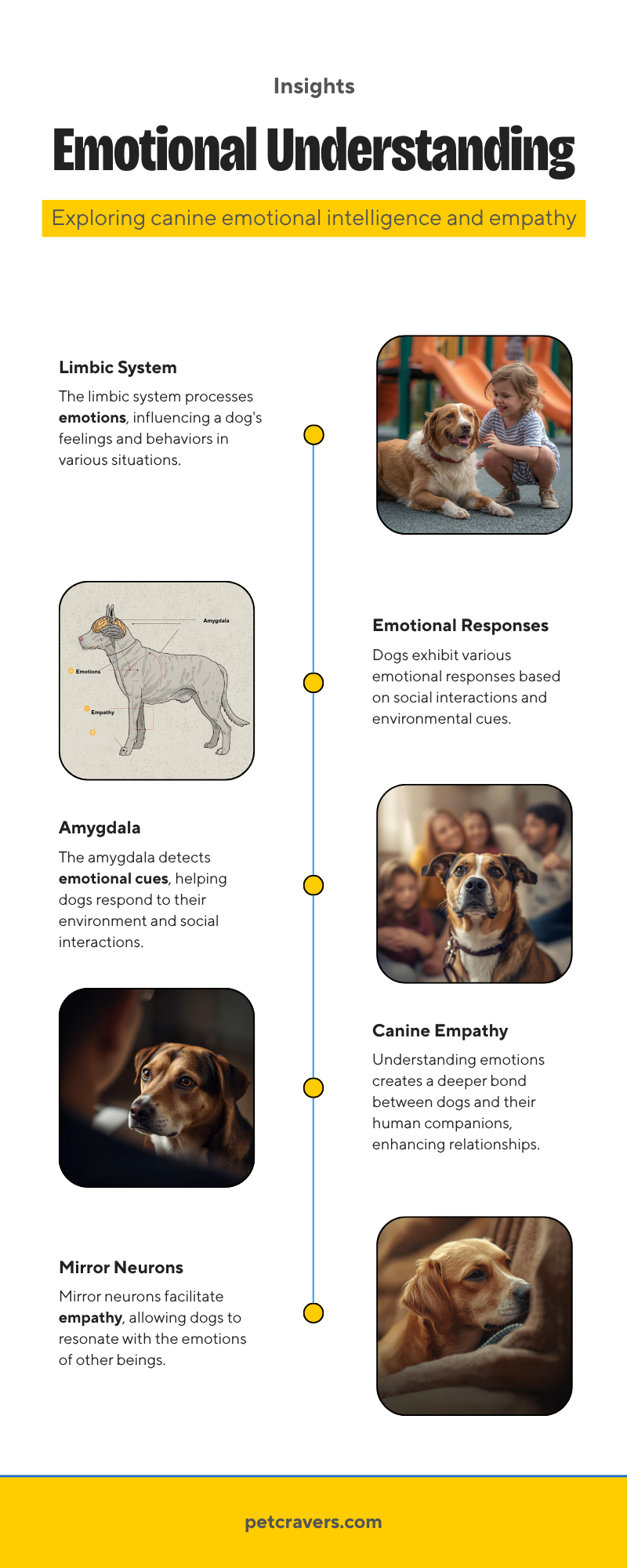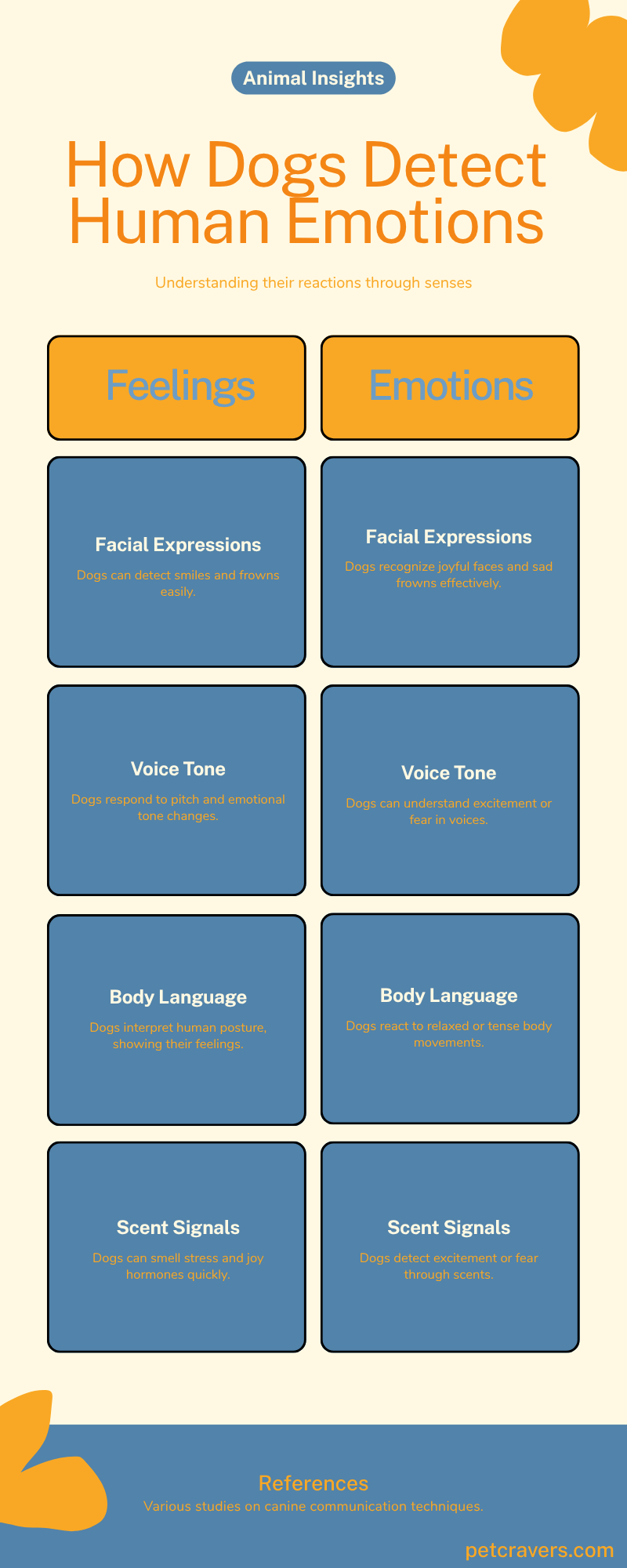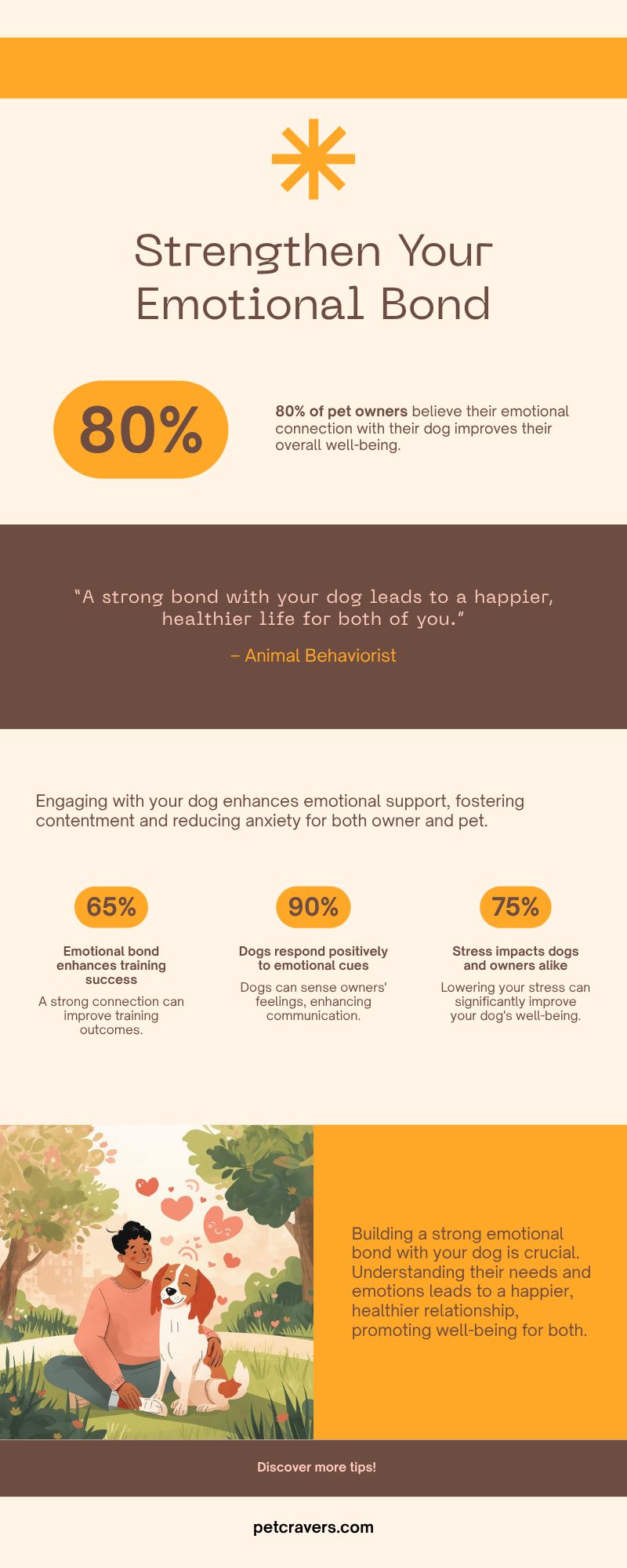Introduction
Have you ever noticed your dog curling up beside you when you’re feeling down or wagging their tail excitedly when you’re happy? These moments make it seem like dogs truly understand what we’re feeling. But is it just a coincidence, or are dogs genuinely aware of human emotions?
Recent research suggests that dogs are far more attuned to our feelings than we might have imagined. From reading facial expressions to sensing changes in our voice and even detecting subtle chemical signals, dogs have a unique ability to perceive and respond to the emotions of their human companions. In this post, we’ll explore the science behind this remarkable connection and uncover whether our furry friends truly understand what we’re feeling—or if they’re simply reacting to cues we give them.
The Science Behind Emotional Understanding
Dogs aren’t just cute companions—they’re emotional detectives. Their brains are wired to process and respond to human feelings in ways that often surprise us. Key areas of the canine brain play a central role in this emotional awareness.

The Limbic System: The Emotional Hub
The limbic system, often called the brain’s emotional center, helps dogs process feelings like fear, joy, and anxiety. This region allows them to react appropriately when their owner is happy, sad, or stressed.
The Amygdala: Detecting Threats and Emotions
The amygdala is critical for recognizing emotional cues. In dogs, it responds to human facial expressions and vocal tones, helping them detect emotions such as anger, sadness, or excitement.
Mirror Neurons: The Empathy Connection
Mirror neurons in dogs’ brains may allow them to “mirror” human emotions. These neurons fire not only when dogs perform an action, but also when they observe a human expressing an emotion. This could explain why dogs often comfort us when we’re upset or share in our excitement.
Evidence from Science
Studies using brain scans and behavioral experiments show that dogs can differentiate between happy and angry faces, positive and negative tones of voice, and even subtle body language. Their reward centers activate more strongly when they detect positive emotions in humans, demonstrating a real neurological basis for emotional awareness.
In short, dogs’ brains are finely tuned to pick up on the emotions of their human companions, making them sensitive, empathetic, and highly social animals.
How Dogs Detect Human Emotions
Dogs have an extraordinary ability to sense what we’re feeling, often picking up on signals that we don’t even realize we’re giving. Their emotional radar comes from a combination of facial recognition, voice tone, body language, and even scent.

Facial Expressions
Dogs are adept at reading human faces. Studies show that they can distinguish between happy and angry expressions and often respond accordingly. A smile might prompt excitement, while a frown could trigger caution or comforting behavior.
Tone of Voice
Dogs don’t understand words the way humans do, but they are highly sensitive to the tone and pitch of our voices. A cheerful, high-pitched tone encourages playfulness, while a low or sharp tone can signal displeasure or warning.
Body Language and Gestures
Dogs pay close attention to posture, movement, and subtle gestures. Leaning toward them, relaxed movements, or tense posture all send signals that their brains interpret to gauge our emotional state.
Scent Cues
Dogs’ sense of smell is incredibly powerful, and research shows they can detect chemical changes associated with emotions like stress, fear, or happiness. Pheromones released during emotional states give dogs yet another layer of insight into how we’re feeling.
By combining these cues, dogs can form a surprisingly accurate picture of our emotions, allowing them to respond in ways that seem almost human.
Evidence from Research
Scientific studies provide compelling evidence that dogs don’t just react randomly—they respond to human emotions in measurable ways.
Behavioral Experiments
In controlled experiments, dogs have been shown to react differently depending on the emotional state of their human companions. For example, dogs often approach and comfort someone who appears sad, but may retreat or remain cautious when someone shows anger or fear. These consistent patterns suggest that dogs can recognize and respond to emotions rather than acting on chance.
Brain Imaging Studies
Functional MRI (fMRI) studies have revealed that dogs’ brains respond differently to positive and negative human cues. When dogs hear happy voices or see smiling faces, the reward centers in their brains light up. This neurological response shows that dogs experience pleasure and recognition when detecting positive human emotions.
Emotional Mirroring
Research also indicates that dogs may mirror human emotions. They often exhibit behaviors such as yawning when their owners are stressed, or becoming excited when their owners are joyful. This empathy-like behavior supports the idea that dogs are emotionally in tune with their humans.
Taken together, these studies demonstrate that dogs are more than just observant—they are sensitive to the emotional signals of the people around them.
Emotional Intelligence in Dogs
Dogs may not think like humans, but they exhibit a remarkable level of emotional intelligence. This allows them to respond appropriately to our feelings and even influence our moods.
Empathy-Like Behavior
Dogs often show comforting behaviors when their owners are sad or distressed. They may nuzzle, paw, or sit close to provide reassurance. While it’s debated whether this is true empathy or instinctive response, the behavior suggests a deep sensitivity to human emotions.
Understanding vs. Learned Behavior
Some of dogs’ emotional responses are learned through repeated interactions. For example, a dog may learn that cuddling when its owner cries results in positive attention. However, many reactions appear spontaneous, indicating a natural capacity to sense emotions beyond mere conditioning.
Socialization and Training
A dog’s ability to read emotions can be enhanced by early socialization and consistent interaction with humans. Puppies exposed to a variety of emotional cues tend to grow into adults who are more emotionally attuned and responsive.
By combining innate sensitivity with learning experiences, dogs develop a sophisticated form of emotional intelligence that allows them to bond closely with humans and navigate social interactions effectively.
Factors That Influence Emotional Understanding
Not all dogs perceive human emotions in the same way. Several factors affect how sensitive a dog is to the feelings of their human companions.
Breed Differences
Certain breeds are naturally more attuned to human emotions. For example, herding dogs like Border Collies and Labradors tend to be highly responsive to cues, while more independent breeds may be less expressive or slower to react.
Age and Life Experience
Puppies are still learning to interpret emotional signals, while adult dogs have more experience and stronger emotional awareness. Senior dogs may experience cognitive decline, which can reduce their responsiveness to emotional cues.
Strength of the Owner-Dog Bond
The closer the relationship between dog and owner, the more accurately a dog can read emotions. Dogs that spend more quality time with their humans are better at recognizing subtle cues and reacting appropriately.
Socialization and Training
Early exposure to various people, emotions, and environments enhances a dog’s emotional understanding. Positive reinforcement and interactive training can further strengthen these abilities.
Understanding these factors helps explain why some dogs seem like emotional geniuses while others are less responsive, highlighting the importance of care, attention, and socialization.
Practical Implications for Dog Owners
Knowing that dogs can perceive and respond to human emotions has real-world benefits for training, communication, and strengthening your bond.

Improve Communication
By being aware of your own body language, tone of voice, and facial expressions, you can communicate more clearly with your dog. This helps prevent misunderstandings and encourages positive behaviors.
Enhance Bonding
Responding to your dog’s cues and providing emotional support in return reinforces trust and strengthens the human-dog relationship. Dogs thrive when they feel understood and valued.
Use Emotional Cues in Training
Dogs learn faster when training incorporates emotional context. Praising with a happy tone or showing excitement when they succeed can make learning more effective.
Recognize Stress Signals
Understanding that dogs are sensitive to human emotions also helps you monitor their well-being. Stress or anxiety in humans can transfer to dogs, so managing your own emotions can benefit your dog’s mental health.
By applying these insights, owners can create a harmonious environment that supports both their dog’s emotional intelligence and their shared happiness.
Conclusion
Dogs are more than loyal companions—they are emotionally perceptive partners who can sense and respond to our feelings in ways that often surprise us. From reading facial expressions and voice tones to detecting subtle body language and even chemical changes, dogs possess a remarkable ability to understand human emotions.
Scientific research shows that these responses are rooted in their brain structure, neurological activity, and social intelligence. While some behaviors may be learned, many appear instinctive, demonstrating a natural sensitivity to the emotional world of humans.
By recognizing and respecting this emotional awareness, dog owners can strengthen their bond, communicate more effectively, and create a happier, healthier environment for their furry companions. Understanding a dog’s emotional intelligence deepens our connection, reminding us that our four-legged friends truly share not only our homes, but our hearts.




Leave a Reply